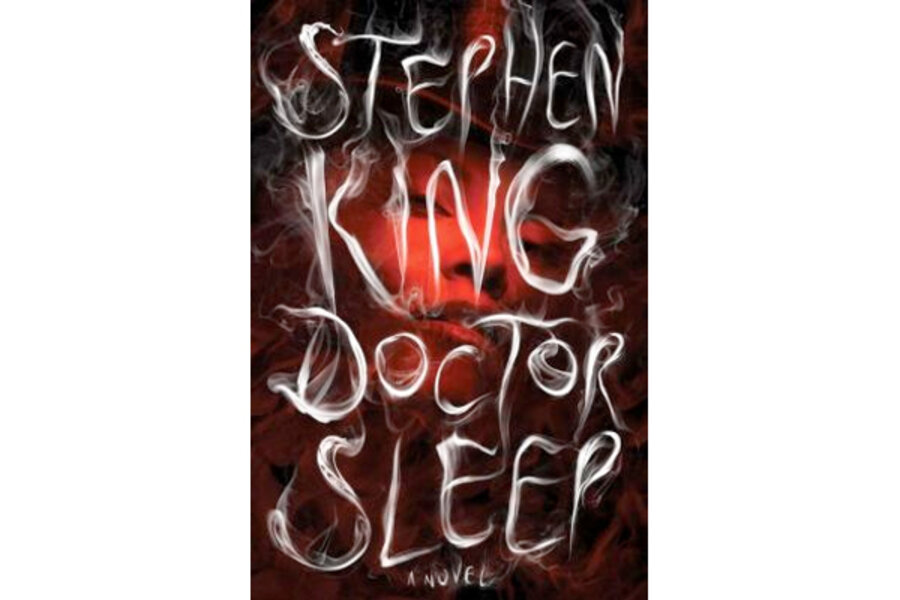Doctor Sleep
Loading...
“The mind was a blackboard. Booze was the eraser.”
Welcome to Doctor Sleep, a long-awaited sequel to Stephen King’s 1977 bestseller “The Shining.” King has remarked that the earlier novel, about a young boy who sees into the minds of people while his alcoholic father copes with violent hallucinations, was about his own alcohol and drug demons, though he didn’t recognize it at the time.
The boy in “The Shining,” Danny Torrance, is closing in on middle age when “Doctor Sleep” hits its stride. Like his father, Jack Torrance, the doomed caretaker during a snowed-in off-season at a Colorado hotel, Dan Torrance (Danny has been left behind) has become a meandering alcoholic in his adult years.
A chanting group of vampire-like humans, shielded by their convincing disguise as RV-friendly travelers, bring a fair amount of menace to the proceedings once the reader gets past some cartoonish chanting and ritual ceremonies. But what is truly frightening is King’s penchant for portraying the disintegration of drunks and druggies as well as everyone around them.
Consider the following paragraph, a passage with King’s trademark gross-out humor and horror mixed with the humiliation of addictive behavior.
“His stomach gave a liquid lurch. He burped up a mouthful of sour gunk that tasted of whiskey and swallowed it back. It burned going down. He rolled off the mattress onto his knees, staggered to his feet, then swayed as the room began to do a gentle tango.”
King puts Dan’s “shining” to work again in “Doctor Sleep.” After finally kicking booze, Dan has settled into a small New Hampshire town and become a hospice worker. He takes on the nickname “Doctor Sleep” because of his uncanny ability to discern when a patient is on the cusp of death and his willingness to comfort the afflicted.
All well and good, but King being King, strange things start to happen soon enough. The RV vampires, known as the True Knot, don’t live forever but they extend their life spans by many decades with regular doses of “the steam.” And just what is the steam? A mist, an essence of restoration gleaned from the torture and eventual killing of children who have shining-type powers similar to those Dan Torrance had as a child.
Thus do phrases, characters, and events made memorable as much by the Stanley Kubrick film as the original novel – “redrum,” anyone? — return in grand style in the sequel.
King loves to assemble motley crews of neighbor-next-door types, familiar faces who love the Red Sox and John Sandford potboilers and the "Lord of the Rings" movies, and put them into extraordinary situations. So he does again here, with a pair of alcoholics (Dan and a New England pediatrician), a 70-something groundskeeper, and a teenage girl who loves boy bands and happens to have a powerful shining of her own all joining forces.
Descriptions of King’s work have slowly moved from pop-culture junk to grudging acknowledgment of his storytelling power. After more than 50 novels, every one a strong seller, reviewers now recognize that King endures on the basis of more than just blood and guts, though he still relishes those moments, too.
Some still miss King’s black humor, sprinkled throughout his work. A typical example: after one of the True Knot members kills a rube — everyday humans are “rubes” in True Knot lingo — the pick-up-driving victim has provided not just a truck for the taking but also a moment of red-blooded U.S. of A. adrenaline courtesy of the inherent soundtrack.
“The key was in the ignition,” King writes. “Crow started the engine and the radio came on in a yahoo roar of Toby Keith: God bless America and pour the beer.”
Family business enters the equation, too. King’s wife and two of his three grown children are published novelists. Joe Hill, whose style most closely resembles his father’s, gets a couple of name-checks in “Doctor Sleep” when his dear old dad references characters and places from “NOS4A2," Hill’s terrific horror novel published earlier this year,
As for King, now in his mid-60s, the past decade stands as one of the most prolific and richest of his career. From a mammoth alternate history with some mind-blowing time travel (“11/22/63”), to the mysteries and vagaries of marriage (“Lisey’s Story”), to an epic sci-fi tale mixed with “Lord of the Flies”-laced political satire (“Under the Dome”), King has produced a recent string of addictive reads that somehow stay loose and fun without lapsing into slapdash, unwieldy works.
Happily, “Doctor Sleep,” in similar fashion, keeps King’s beloved Constant Reader turning the pages into the wee hours. Sometimes, sleep, as Dan Torrance knows, can wait.
Erik Spanberg is a Monitor contributor.






